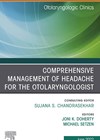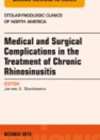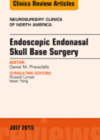
Journal Reviews
Is benign intracranial hypertension underdiagnosed in patients with spontaneous CSF leaks?
In ENT practice we come across spontaneous CSF leaks. Patients present either as unilateral watery rhinorrhoea or otorrhoea, or sometimes as hearing loss with a watery middle ear effusion. Clinicians, after confirming the diagnosis of CSF leak with beta 2...
Lateral skull base surgery using the endoscope
Endoscopic lateral skull base surgery could be performed via less invasive techniques due to wide panoramic visualisation of the operative field. With less invasive techniques, patients have been shown to require shorter recovery time and reduced postoperative pain. In this...
Skull base imaging: a review
This excellent review paper describes the anatomy, imaging protocols and differentiating imaging findings on CT and MRI in myriad skull base lesions. Skull base protocol MRI and thin section CT are required to evaluate all skull base lesions. According to...
Multi-layered repair of lateral sphenoid CSF rhinorrhoea
This case series describes the author’s results with repairing lateral sphenoid encephalocoeles in seven patients. Alloderm inlay with abdominal fat onlay and nasoseptal flap onlay repair resulted in a 100% success rate with no recurrence of cerebrospinal fluid (CSF) rhinorrhoea,...
Managing spontaneous CSF leaks secondary to benign intracranial hypertension
Spontaneous CSF leaks are a rare entity. In this paper, a Spanish group report their experience managing the condition using endoscopic surgery in 35 patients over an eight year period. Leak locations included the cribriform plate (18/35), ethmoid roof (15/35)...
Do I need Google maps in here?
Image guidance surgery (IGS) has grown in popularity. This review article discusses its application in endoscopic sinus surgery (ESS). IGS technology has vastly improved with smaller, more mobile platforms that are easy to set up and use. IGS allows validation...
CSF leak – endoscopic or open repair?
Cerebrospinal fluid (CSF) rhinorrhoea is well known to the ENT surgeon. It commonly occurs secondary to a predisposing event such as accidental or iatrogenic trauma. When it occurs spontaneously, it can be associated with benign intracranial hypertension. The commonest CSF...












